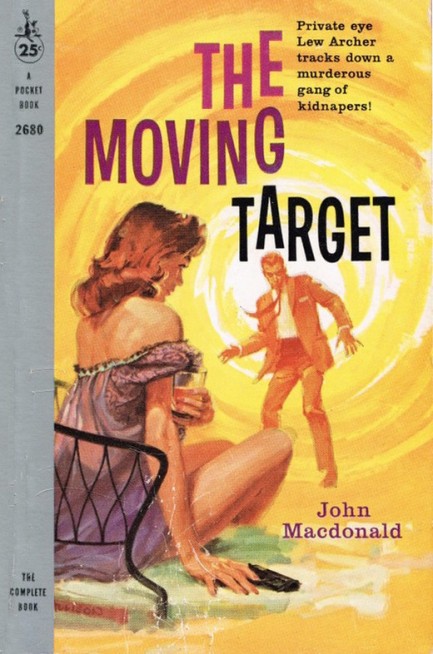| Vintage Pulp | Apr 8 2024 |


Jerry Allison art strikes a menacing note on the cover of William R. Cox's 1960 novel Murder in Vegas, in which Cox's gambler hero Tom Kincaid from 1958's Hell To Pay, which we recently discussed, returns to the written page to find more trouble. The first murder in the book actually occurs in Los Angeles, but someone is later knocked off in Vegas and as a direct result Kincaid is elevated from silent partner to full owner of a casino called the White Elephant. Simultaneously his girlfriend Jean Harper is in town filming a movie, and the murder and film production seem tied together. Kincaid is as interesting as before, but the fun creation here is down-on-her-luck party girl Carry Cain, who mixes sexiness and vulnerability with a beatnik mentality. She's an aspiring actress and gambling addict who thinks Kincaid might finally bring her the luck she's been seeking. Instead she finds herself in the middle of a Vegas-sized mess. Cox has talent, as we've noted before. It shines bright in Murder in Vegas.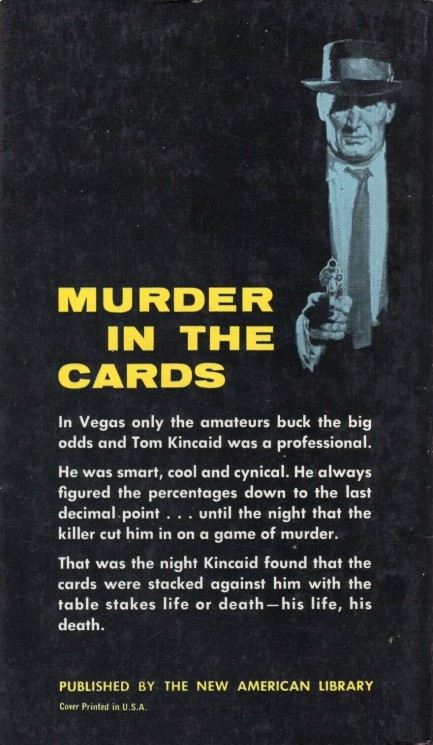
| Vintage Pulp | Jan 10 2024 |

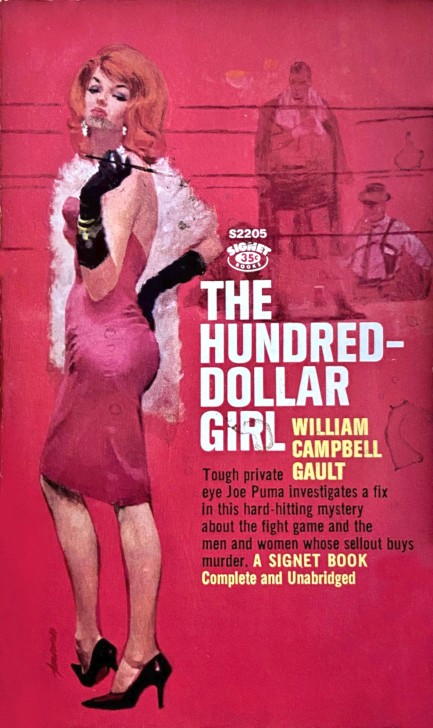
The 1962 Signet paperback of The Hundred-Dollar Girl has striking cover art by Jerry Allison, whose nice work we've seen before here, here, and here. William Campbell Gault's tale sees L.A. private dick Joe Puma investigating whether a boxing match was fixed, then finding himself in the middle of murder and an organized crime takeover of the fight racket. This is the second Puma we've read, and as with the previous book, he gets laid a couple of times, gets ko'd a couple of times, and beats up a couple of guys. All this is fine, but we haven't yet read the Gault novel that makes us sit up and go, "Ahh!" Certainly though, he's been good enough to make looking for that special book a pursuit we expect to pay off. We'll keep looking. In the meantime, if you want an L.A. crime read, you can do worse than The Hundred-Dollar Girl.
| Vintage Pulp | May 25 2022 |

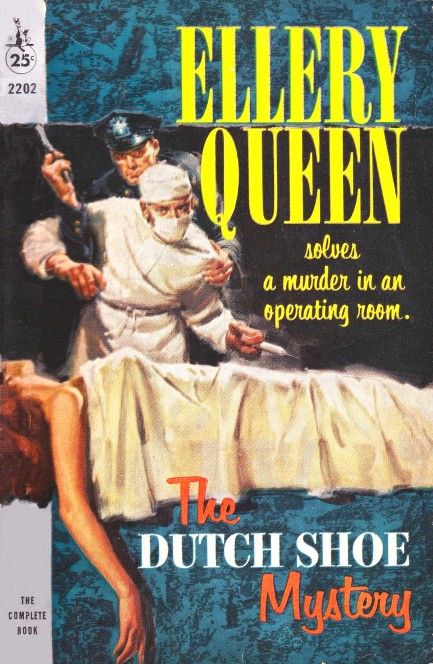
We already shared a 1952 Pocket Books cover for Ellery Queen's The Dutch Shoe Mystery, but this 1959 Pocket Books art by Jerry Allison goes a different direction, so we have a different, equally silly take on it. The Pulp Intl. girlfriends didn't get the joke last time, we suppose because they aren't old enough to know the same useless things we do, so we'll offer the reminder that a traditional Dutch shoe is made of wood and known as a clog. The Dutch Shoe Mystery features no clog that needs removal, just a ruptured gall bladder. Before the doctor can perform the operation, the patient, a millionairess who founded the hospital, is strangled with a piece of wire. Suspects: a few family members and the immediate medical staff. The “Dutch” in the title comes from the name of the hospital: Dutch Memorial. The “shoe” comes from the standard footwear of surgeons: white canvas moccasins which are the sole (oops) clue. Third in the Ellery Queen series, the authors Frederic Dannay and Manfred Bennington Lee (aka Daniel Nathan and Manford Lepofsky) basically update the classic locked room mystery by staging it in a medical facility. Good? Well, they published more than thirty subsequent Queen capers, so take that for what it's worth.
| Vintage Pulp | Dec 10 2019 |

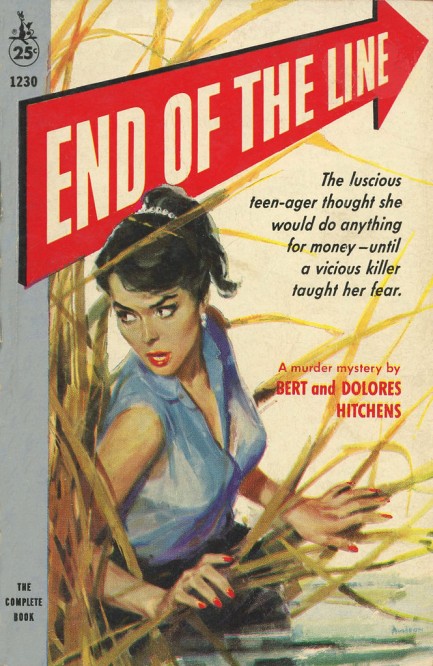
Detectives and their partners are considered to be a common motif in mid-century fiction, but actually you don't run into pairings as often as you'd expect, and when you do, one character usually dominates the narrative. End of the Line, by Bert and Dolores Hitchens, features two detectives in a story that's almost equally divided. Maybe that's what happens when spouses collaborate. The two detectives work for a railroad company and are tasked with investigating a cold case—the Lobo Tunnel crash of five years earlier, in which a train was derailed by a deliberately placed obstruction. The mystery is fine, but the fun part is reading how the two sleuths—one a mama's boy and the other a heavy drinker—try to work together. The Pocket Books paperback you see here has beautiful cover art by Jerry Allison that suggests the story is about a girl in trouble. That's true too, but it's the dicks that make this one swing. Pretty cool stuff, copyright 1959.
| Vintage Pulp | Dec 1 2018 |

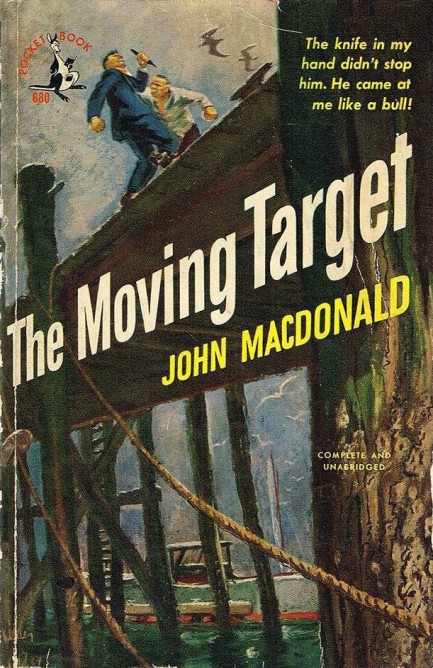
In this world that he's accepted as more complex than he'd like it to be, he navigates using a solid personal code and a very hard skull—both severely tested multiple times. We gather the story is considered unremarkable compared to later Archer novels, but for us it was entirely satisfactory. It satisfied Hollywood too, which made it into a star vehicle for Paul Newman called Harper. Why the name of the detective was changed we can't even begin to guess, but we saw the movie a couple of years ago and it was enjoyable. Below you see a 1959 Pocket Books edition of The Moving Target with Jerry Allison art. More from MacDonald later.
